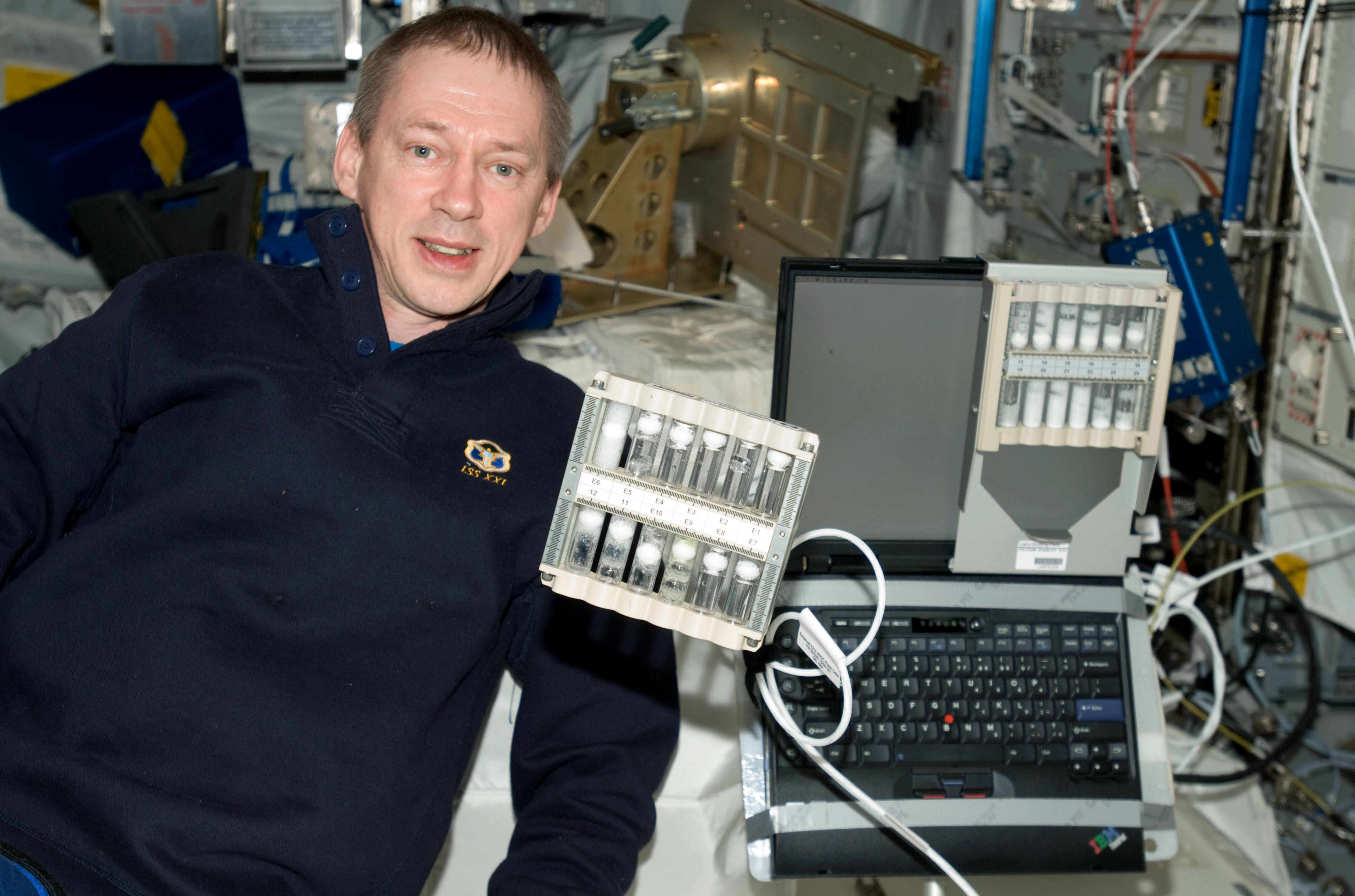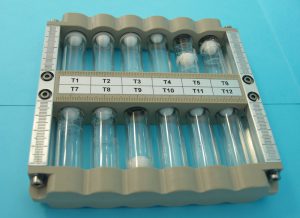FOAM-S
The FOAM project aims at the study of aqueous and non-aqueous foams in the microgravity environment on-board the International Space Station (ISS). The FOAM project is divided in two experiments: “FOAM Stability“, which is under the responsibility of the E-USOC, and “FOAM Coarsening”.
The Foam Stability Experiment (FOAM-S) was operated by Belgian astronaut Frank De Winne, as crew member of Increment 19 on the ISS in 2009. E-USOC is the responsible centre of operations’ preparation, validation, and execution for FOAM-S experiment. Broadly, E-USOC coordinates this Payload in Real-time operations. The equipment was uploaded with PROGRESS 34P in June 2009. The experiment was performed in the Columbus module of the International Space Station.
Significant Dates
Mission 34P – Expedition 19/20: June, 2009
| FOAM-S | |
|---|---|
| First Experimental Run | September, 2009 |
| Latest Experimental Run | October, 2009 |
Source: ESA
Experiment/Payload description
Foams are dispersion of gas into liquids or solid matrices, but they are typically made in conditions where the matrix is liquid. The behaviour of foams in micro-gravity and on earth are very different, because the process of drainage is absent in microgravity conditions.
By drainage we are referring to the irreversible flow of liquid through the foam (leading to the accumulation of liquid at the foam bottom, and to a global liquid content decrease within the foam). In this case the bubbles deform to polyhedral throughout the upper portion of the foam, creating the so called “dry foam”. When the liquids films between the bubbles are very thin, they eventually break, and the foam collapses (this happens when suitable stabilizing agents are absent). Microgravity offers the possibility to investigate the so called “wet” foams, which cannot be stabilized on earth because of drainage. Theoretical approaches of drainage rely on assumptions, which are only valid for dry foams. New behaviours or regimes are expected to appear for wet foams, masked by convective instabilities on Earth. Elastic and viscous properties of wet foams are also expected to be strongly modified by the presence of solid particles. The Physics of wet foams is therefore poorly known, and is one of major goal of this project.
Foamability is an important property of liquids. Most of liquids do not stabilize into foam structures because liquid films are drained by gravity until the liquid films break. Amphiphilic (surfactants) molecules are commonly used to prevent this rupture of the liquid films. Those molecules stabilize the films by forming layers of electrostatic charges at the molecular level along the liquid/air interfaces.
While the difference between foaming and not-foaming solutions is clear, the case of slightly-foaming product is more complicated. For these latter, it is observed that although agitation does not produce stable bubbles and liquid films on Earth, some liquid solutions can nevertheless produce foam in microgravity. This surprising result has been confirmed during parabolic flight experiments performed in fall 2007. Among others, pure water may exhibit this degree of foamability. The presence of tiny solid particles in the liquid could also enhance this physical phenomenon and stabilize the water foam.
The fundamental questions to be addressed are thus:
- How does microgravity affect the foamability of liquid solutions?
- How long can those foams be stable?
- What is the role of solid particles?
- Is it possible to create very wet foams in microgravity?




